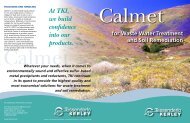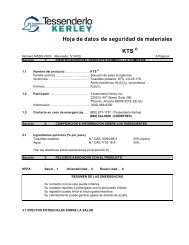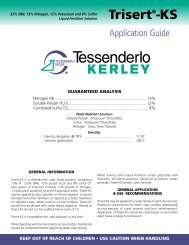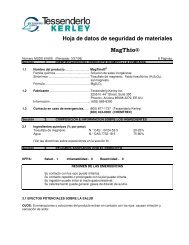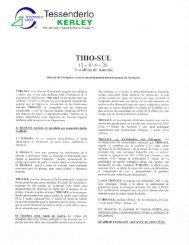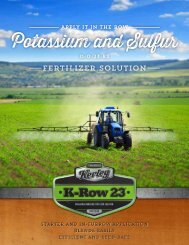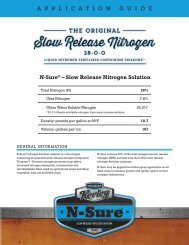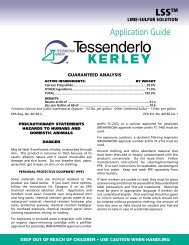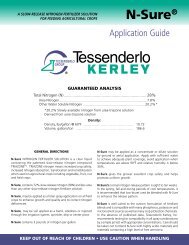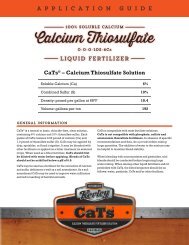Trisert KS SDS - Tessenderlo Kerley
Trisert KS SDS - Tessenderlo Kerley
Trisert KS SDS - Tessenderlo Kerley
Create successful ePaper yourself
Turn your PDF publications into a flip-book with our unique Google optimized e-Paper software.
Page 2.Section 3: HAZARDS IDENTIFICATION (Cont.)3.1 POTENTIAL HEALTH EFFECTSEYE: Contact with the eyes by product mist or solution may cause irritation or a burning sensation.SKIN CONTACT: Prolonged or repeated contact with product mist or solution may cause skin irritation.SKIN ABSORPTION: Absorption is unlikely to occur.INGESTION: Ingestion of product solution may cause irritation of the gastrointestinal tract to include nausea,vomiting and diarrhea. These blends are considered to have a low toxicity to humans.INHALATION: Inhalation of product mist may cause irritation of the nose, throat and respiratory tract.CHRONIC EFFECTS/CARCINOGENICITY:Not listed as a carcinogen by NTP, IARC or OSHA.Section 4: FIRST AID MEASURES4.1 EYES: Immediately flush with large quantities of water for 15 minutes. Hold eyelids apart during irrigationto insure thorough flushing of the entire area of the eye and lids. Obtain medical attention.4.2 SKIN: Immediately flush with large quantities of water. Remove contaminated clothing under a safetyshower. Obtain medical attention if irritation occurs.4.3 INGESTION: If victim is conscious, give 2 to 4 glasses of water and induce vomiting by touching finger toback of throat. Obtain medical attention.4.4 INHALATION: Remove victim from contaminated atmosphere. If breathing is labored, administer oxygen.If breathing has ceased, clear airway and start mouth to mouth resuscitation. If heart has stopped beating,external heart massage should be applied. Obtain medical attention.Section 5: FIRE FIGHTING MEASURES5.1 FLAMMABLE PROPERTIESFLASH POINT: Not flammableMETHOD USED: NA5.2 FLAMMABLE LIMITS LFL: NA UFL: NA5.3 EXTINGUISHING MEDIA: As appropriate for combustibles involved in fire.5.4 FIRE & EXPLOSIVE HAZARDS: Heating to dryness may cause the release of ammonia and carbondioxide. This ammonia, NH 3, may form flammable mixtures (16-25%) with air.Keep containers/storage vessels in fire area cooled with water spray. Intense heating may cause the releaseof ammonia vapors.<strong>Trisert</strong>-<strong>KS</strong>



